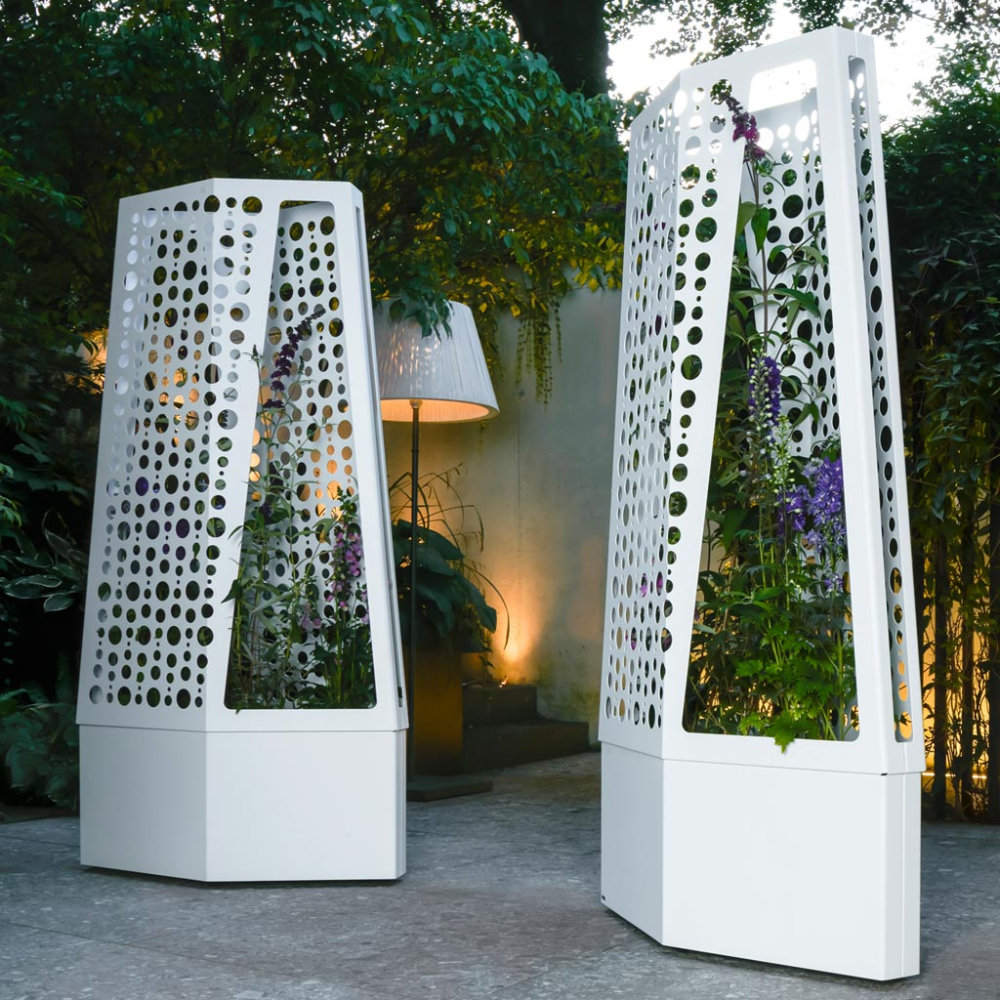Trellis Air is revolutionizing the air conditioning landscape with its innovative membrane dehumidification technology. Developed by a team of Harvard researchers, this cutting-edge system offers an eco-friendly alternative to conventional cooling methods, which are responsible for a significant portion of global greenhouse gas emissions. As climate change continues to intensify, the need for energy-efficient air conditioning solutions has never been more critical. The unique design of the Trellis Air system allows it to operate with less energy while effectively cooling and drying the air, positioning it as a significant contributor to climate change solutions. With the potential to disrupt traditional cooling systems, Trellis Air exemplifies how innovative AC systems can lead to a more sustainable future.
Introducing Trellis Air, a pioneering solution in the world of climate control. This type of technology marries membrane-based dehumidification with groundbreaking advancements from the Harvard innovation ecosystem, promising a cleaner and more sustainable approach to air conditioning. In a time when energy-efficient systems are paramount, alternatives to traditional methods are essential for reducing our carbon footprint. The Harvard startup’s method resembles groundbreaking cooling innovations that aim to tackle the pressing problem of rising global temperatures. With such significant developments in energy efficiency, Trellis Air represents a new era of air conditioning systems aimed at combating climate challenges.
Revolutionizing Air Conditioning with Trellis Air
As the global climate crisis intensifies, the demand for effective cooling solutions has surged. Traditional air conditioning methods, predominantly employing vapor-compression technology, lag behind current needs. This is where Trellis Air steps in, introducing a pioneering approach that utilizes membrane dehumidification to cool air. With climate change driving up temperatures, innovative AC systems like those developed by Trellis Air not only promise to enhance comfort but also significantly reduce energy consumption. In fact, this novel system helps in minimizing the carbon footprint associated with conventional air conditioning, responding effectively to the urgent calls for climate change solutions.
Trellis Air’s membrane, akin to a coffee filter, separates water vapor from the air more efficiently than standard dehumidifiers and AC systems. By reducing the energy used in moisture removal, it offers a low-energy alternative that contributes to greener indoor climates. This energy-efficient air conditioning technology is a game-changer, evolving from a century of stagnant cooling solutions to one that prioritizes sustainability and efficiency. The implications for both residential and industrial air conditioning markets are profound, suggesting that as Trellis Air’s technology scales, it could drastically cut down on greenhouse gas emissions linked to cooling practices.
The Science Behind Membrane Dehumidification
Membrane dehumidification technology stands at the forefront of modern cooling innovations. Unlike traditional cooling systems that rely on chemical refrigerants and consume vast amounts of energy, Trellis Air’s unique membrane offers a third way to achieve comfortable indoor environments. Developed in collaboration with Harvard scientists, this cutting-edge technology utilizes a meticulously designed membrane that filters water vapor directly from the air. This process is akin to employing a state-of-the-art filter, allowing Trellis Air to outpace existing methods in terms of efficiency and environmental impact.
The design of the Trellis Air system reflects a remarkable fusion of scientific research and engineering prowess. The membrane, just 15 microns thick, enables extensive longevity while minimizing energy usage. By keeping the energy needs low, Trellis Air not only enhances operational efficiency but also edges closer to meeting climate change challenges. This innovative air conditioning mechanism creates a durable and scalable solution that could redefine how we view cooling technology, particularly in energy-sensitive environments where drainage of moisture without excessive energy consumption is paramount.
Trellis Air’s technology could serve multiple applications: from enhancing residential comfort to providing necessary humidity control in industrial settings. This versatility further cements its role as a transformative force in the air conditioning landscape.
With rising energy demands due to increasing global temperatures, Trellis Air presents a potential lifeline. Their method not only serves immediate cooling needs but aligns with broader climate goals, making it one of the most promising advancements in fighting climate change.
Trellis Air’s Potential Impact on Climate Solutions
Trellis Air represents more than just an advancement in cooling technology; it embodies a proactive response to one of the significant contributors to climate change: energy consumption in air conditioning systems. Current estimates show that air conditioning accounts for up to 4% of global greenhouse emissions, which is enormous considering the demand is expected to rise by up to 40% by 2030. As climate action becomes increasingly critical, Trellis Air’s innovative approach could substantially alleviate the burden posed by global cooling needs, marking it as a vital component of climate change solutions.
Utilizing energy-efficient practices, Trellis Air enhances the overall sustainability of cooling systems while reducing dependency on traditional energy-intensive systems. The projected impact of their technology is twofold: less energy consumption translates directly into lower emissions and contributes to cooling that aligns with a vision of environmentally-friendly living. As Trellis Air seeks to integrate its membrane technology within broader air conditioning markets, it reinforces the notion that effective climate solutions can often arise from innovative engineering and material science.
Integrating Trellis Air into Existing Systems
The journey of Trellis Air doesn’t just end at independent application; integrating its technology into existing air conditioning systems holds great promise. By providing a ‘pre-drying module’ that enhances the efficiency of conventional AC units, Trellis Air can offer an immediate path to greater energy savings without necessitating a full system overhaul. This strategy is not only cost-effective but also appealing to current air conditioner users who are increasingly aware of their carbon footprint.
Replacing outdated systems or systems requiring frequent maintenance is crucial in driving down energy consumption. By adopting Trellis Air’s innovative solution, businesses and homeowners can leverage greater efficiency, thereby minimizing their reliance on energy-intensive cooling solutions. This opportunity makes Trellis Air a crucial player in the discourse on energy efficiency and sustainability, challenging the status quo and encouraging a transition toward smarter air conditioning practices.
Commercialization Pathways for Trellis Air
The pathway to commercialization for Trellis Air is poised for success as various sectors recognize the potential benefits of its membrane technology. Area applications ranging from residential settings to industrial operations present diverse opportunities to replace or enhance existing dehumidification and cooling systems. This commercial expansion directly supports the wider adoption of energy-efficient air conditioning solutions that are imperative for tackling climate change.
Key partnerships and collaborations with educational institutions and private-sector ventures are driving the marketing tactics for Trellis Air. These affiliations lend credibility to the innovative technology and ease the journey toward integrating sustainable practices into daily operations. By positioning itself as a leader in the green tech realm, Trellis Air is set to not only benefit its stakeholders but also contribute positively to global environmental efforts.
Collaborative Research and Development Efforts
Behind the success of Trellis Air lies a remarkable collaboration between researchers and entrepreneurs, highlighting the importance of interdisciplinary teamwork in driving innovation. The collective expertise from departments such as architecture, materials science, and environmental engineering at Harvard has played a pivotal role in developing the technology’s foundational concepts. Through efforts of notable scientists and industry veterans, Trellis Air has managed to harness the latest advances in materials and engineering to optimize its cooling solutions.
Funding and support from various institutions, including the Department of Energy and the Wyss Institute, further enhance Trellis Air’s research potential. Such collaboration ensures that the technology undergoes thorough evaluation and real-world testing, ensuring viability on a commercial scale while maintaining adherence to sustainability goals. This collaborative spirit sets a precedent for future innovations in air conditioning technology, emphasizing the synergy between academia and industry.
Real-World Testing and Prototyping Results
The journey of Trellis Air from conception to commercialization is underpinned by rigorous real-world testing. Prototypes have been tested under varying climatic conditions, demonstrating the adaptability and reliability of the technology. For instance, pilot studies conducted in both Miami’s humid climate and Boston’s variable weather showcase how Trellis Air’s membrane efficiently climates spaces while consuming minimal energy. These trials are vital for not only refining the technology but also instilling confidence in investors and stakeholders regarding its scalability.
The successful transition from theoretical modeling to practical application reflects Trellis Air’s commitment to providing proven solutions to air conditioning challenges. By collecting empirical data through these prototypes, the team is turning their groundbreaking ideas into tangible products poised to effectively meet growing cooling demands while addressing pressing climate issues.
Future Outlook for Trellis Air Technology
Looking ahead, Trellis Air stands at the forefront of a transformative shift in how we approach air conditioning and dehumidification. As global temperatures rise and energy demands increase, the need for sustainable, innovative solutions has never been more urgent. Trellis Air’s technology not only promises increased efficiency but also aligns perfectly with global initiatives aimed at reducing carbon emissions and achieving sustainability goals.
The scaling of Trellis Air’s technology offers an optimistic outlook for the industry as a whole. It signifies a new era of cooling solutions that prioritize environmental stewardship while providing effective performance. With continued research, development, and community engagement, Trellis Air has the potential to redefine the air conditioning landscape, making it a sustainable choice for future generations.
Frequently Asked Questions
What is Trellis Air and how does it improve membrane dehumidification?
Trellis Air is a Harvard startup focused on revolutionizing cooling technology, specifically through its innovative membrane dehumidification system. Unlike traditional air conditioners that use chemical refrigerants and significant energy, Trellis Air employs a unique membrane to directly separate water vapor from the air. This method is similar to using a coffee filter, significantly increasing energy efficiency and providing a viable climate change solution.
How does Trellis Air utilize Harvard cooling technology for more energy-efficient air conditioning?
Trellis Air leverages advanced Harvard cooling technology to create an innovative air conditioning system that dramatically reduces energy use. By incorporating a proprietary membrane dehumidification approach, the system minimizes the energy traditionally consumed by air conditioners while effectively cooling and drying the air, making it a promising solution for the growing demand for energy-efficient air conditioning in a warming world.
Why is Trellis Air considered a climate change solution in air conditioning?
Trellis Air addresses the significant contributions of traditional air conditioning systems to greenhouse gas emissions. By offering an innovative AC system that uses membrane dehumidification, it dramatically reduces energy consumption, thus lowering the emissions associated with cooling. As demand for air conditioning surges due to climate change, Trellis Air’s technology provides a sustainable alternative that can mitigate environmental impact.
What are the benefits of Trellis Air’s innovative AC systems compared to traditional methods?
Trellis Air’s innovative AC systems offer several benefits over traditional air conditioning methods, primarily through their unique membrane dehumidification technology. These systems consume less energy, operate more efficiently, and produce fewer greenhouse gas emissions. By integrating this technology, Trellis Air can transform how buildings are cooled, making it a crucial player in advancing energy-efficient air conditioning.
How does Trellis Air’s technology impact energy consumption in buildings?
Trellis Air’s membrane dehumidification technology significantly impacts energy consumption by reducing the workload on traditional air conditioning systems. By efficiently removing moisture from the air without excessive energy use, the system helps lower the overall energy requirements to cool buildings. This reduction is crucial, especially as climate change drives increased demand for cooling solutions.
Can Trellis Air’s membrane technology replace traditional dehumidifiers?
Yes, Trellis Air’s membrane technology is designed to replace traditional dehumidifiers by providing a more energy-efficient solution. Conventional dehumidifiers often consume large amounts of energy, but Trellis Air’s approach addresses moisture removal with significantly less energy consumption, making it an ideal alternative for residential and industrial applications.
| Key Points | Details |
|---|---|
| Background | Researcher Peteris Lazovskis teaches at Harvard and promotes the Trellis Air membrane, a new solution for cooling systems. |
| Environmental Impact | Traditional cooling systems contribute to 4% of global greenhouse gas emissions; demand for air conditioning is expected to rise by 40% by 2030. |
| Innovation | Trellis Air introduces a novel membrane technology that efficiently dries and cools air using significantly less energy than conventional methods. |
| Technology | The system operates like a coffee filter, separating water vapor from air and minimizing the need for refrigerants that can harm the planet. |
| Development | The startup was developed with support from Harvard’s Office of Technology Development and various funding sources, allowing for research and commercialization. |
| Challenges and Solutions | Past membrane dehumidification systems failed due to material rigidity; Trellis Air designed a robust 3D-printed tile to protect their thin membrane. |
| Future Prospects | Trellis Air aims to replace desiccant systems, enhance dehumidifiers and integrate its tech into air conditioners, offering a pre-drying module for energy efficiency. |
| Pilot Testing | Results from real-world tests in varying climates (Miami, Boston) showcase Trellis Air’s potential impact on energy consumption and efficiency. |
Summary
Trellis Air represents a game-changer in the HVAC industry by utilizing innovative membrane technology to provide efficient air cooling and drying solutions. With the pressing challenge of climate change exacerbating the demand for cooling systems, Trellis Air’s unique approach has the potential to significantly reduce energy usage and greenhouse gas emissions. The future looks promising for Trellis Air as it aims to disrupt the traditional air conditioning market, making strides toward a sustainable and energy-efficient solution to the growing cooling demands worldwide.


